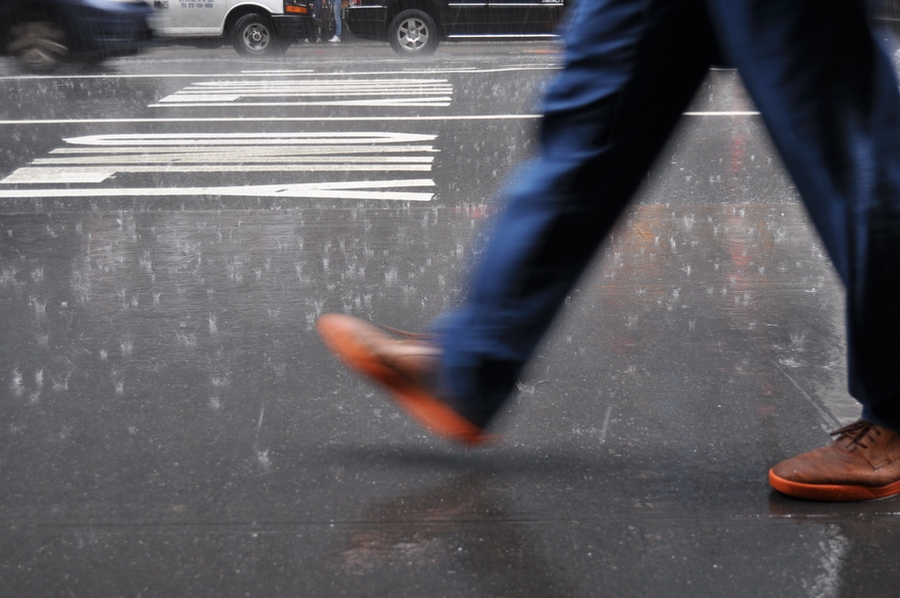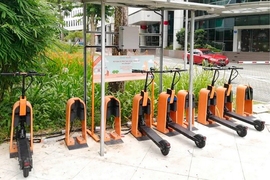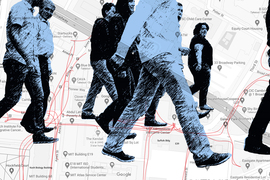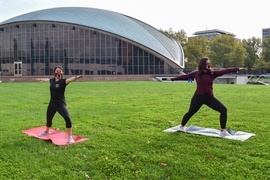Lockdowns saved lives during the global SARS-CoV-2 pandemic. But as much as they have slowed the spread of Covid-19, there have been some unintended consequences.
New MIT research shows that lockdowns in 10 metropolitan areas throughout the United States led to a marked reduction in walking. These decreases were mostly seen among residents living in lower-income areas of the city, effectively reducing access to physical activity for minorities and people suffering from illnesses such as obesity and diabetes.
“Walking is the cheapest, most accessible physical exercise that you can do,” says Esteban Moro, visiting research scientist in the MIT Connection Science Group and senior author on the Nature Communications paper published on June 16. “Places in which people have lower incomes, less park access, and more obesity prevalence were more affected by this walking reduction — which you can think of as another pandemic, the lack of access to affordable exercise.”
The research focused on recreational versus utilitarian walking done by residents in the U.S. cities of New York, Los Angeles, Chicago, Boston, Miami, Dallas, San Francisco, Seattle, Philadelphia, and Washington D.C. (Utilitarian walking is defined as having a goal; for example, walking to the store or to public transportation. Recreational walking is a walk meant for leisure or exercise.)
Comparing cellphone data from February 2020 to different time points throughout 2020 lockdowns, the researchers saw an average 70 percent decrease in the number of walks — which remained down by about 18 percent after loosened restrictions — a 50 percent decrease in distance walked, and a 72 percent decrease in utilitarian walking — which remained down by 39 percent even after restrictions were lifted.
On their face, these findings may not be surprising. When people couldn’t leave their homes, they walked less. But digging deeper into the data yields troubling insights. For example, people in lower-income regions are more likely to rely on public transportation. Lockdowns cut back on those services, meaning fewer people walking to trains and buses.
Another statistic showed that people in higher-income areas reduced their number of utilitarian walks but were able to replace some of the lost movement with recreational walks around their neighborhoods or in nearby parks.
“People in higher-income areas generally not only have a park nearby, but also have jobs that give them a degree of flexibility. Jobs that permit them to take a break and walk,” says Moro. “People in the low-income regions often don't have the ability, the opportunity or even the facilities to actually do this.”
How it was done
The researchers used de-identified mobile data obtained through a partnership within the company Cuebiq’s Data for Good COVID-19 Collaborative program. The completely anonymized dataset consisted of GPS locations gathered from smartphone accelerometers from users who opted into the program. Moro and his collaborators took these data and, using specifically designed algorithms, determined when people walked, for how long, and for what purpose. They compared this information from before the pandemic, at different points throughout lockdown, and at a point when most restrictions had been eased. They matched the GPS-identified locations of the smartphones with census data to understand income level and other demographics.
To make sure their dataset was robust, they only used information from areas that could reasonably be considered pedestrian. The researchers also acknowledge that the dataset may be incomplete, considering people may have occasionally walked without their phones on them.
Leisure versus utilitarian walks were separated according to distance and/or destination. Utilitarian walks are usually shorter and involve stops at destinations other than the starting point. Leisure walks are longer and usually happen closer to home or in dedicated outdoor spaces.
For example, many of the walks recorded pre-Covid-19 were short and occurred at around 7 a.m. and between 3 and 5 p.m., which would indicate a walking commute. These bouts of walking were replaced on weekends by short walks around noon.
The key takeaway is that most walking in cities occurs with the goal of getting to a place. If people don’t have the opportunity to walk to places they need to go, they will reduce their walking activity overall. But when provided opportunity and access, people can supplement utilitarian activity with leisure walking.
What can be done about it
Taking into account the public health implications of physical inactivity, the authors argue a reduction in access to walking should be considered a second pandemic and be addressed with the same rigor as the Covid-19 pandemic.
They suggest several tactical urbanization strategies (defined as non-permanent but easily accessible measures) to increase safety and appeal for both utilitarian and recreational walkers. Many of these have already been implemented in various cities around the world to ease economic and other hardships of the pandemic. Sections of city streets have been closed off to cars on weekends or other non-busy times to allow for pedestrian walking areas. Restaurants have been given curb space to allow for outdoor dining.
“But most of these pop-up pedestrian areas happen in downtown, where people are high-income and have easier access to more walking opportunities,” notes Moro.
The same attention needs to be paid to lower-income areas, the researchers argue. This study’s data showed that people explored their own neighborhoods in a recreational way more during lockdown than pre-pandemic. Such wanderings, the researcher say, should be encouraged by making any large, multi-lane intersections safer to cross for the elderly, sick, or those with young children. And local parks, usually seen as places for running laps, should be made more attractive destinations by adding amenities like water fountains, shaded pavilions, and hygiene and sanitation spaces.
This study was unique in that its data came straight from mobile devices, rather than being self-reported in surveys. This more reliable method of tracking made this study more data-driven than other, similar efforts. And the geotagged data allowed the researchers to dig into socioeconomic trends associated with the findings.
This is the team’s first analysis of physical activity during and just after lockdown. They hope to use lessons learned from this and planned follow-ups to encourage more permanent adoption of pedestrian-friendly pandemic-era changes.
The Connection Science Group, co-led by faculty member Alex “Sandy” Pentland — who, along with Moro was a co-author on the paper along with six others from the UK, Brazil, and Australia — is part of the MIT Sociotechnical Systems Research Center within the MIT Institute for Data, Systems, and Society. The collaborative research exemplified in this study is core to the mission of the SSRC; in pairing computer science with public health, the group not only observes trends but also contextualizes data and use them to make improvements for everyone.
“SSRC merges both the social and technological components of the research,” says Moro. “We’re not only building an analysis, but going beyond that to propose new policies and interventions to change what we are seeing for the better.”










